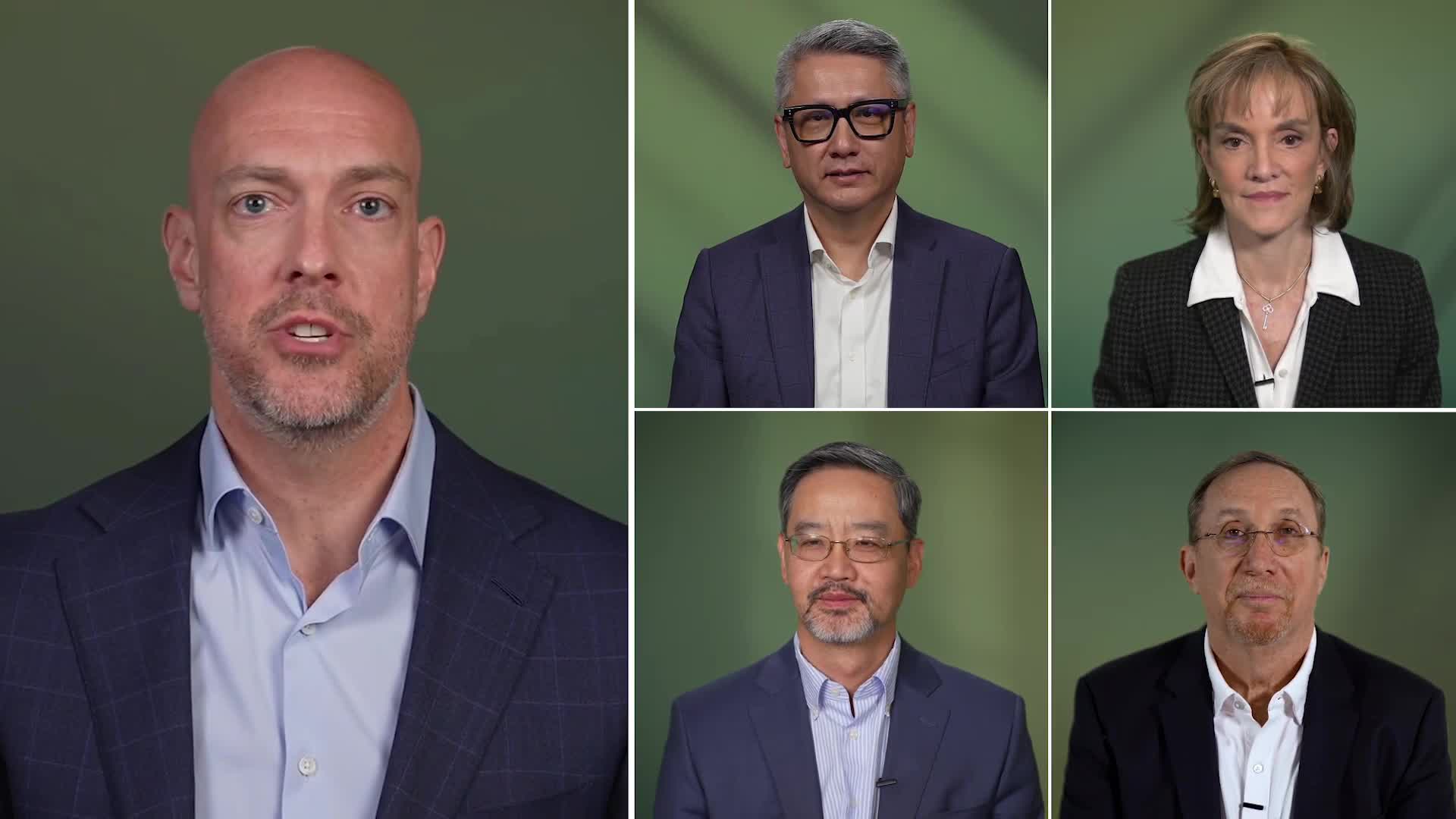CIO Roundtable: Is the Market Too Optimistic?
Stocks posted a remarkable close to the first quarter, and credit spreads are tight. Have the optimists gotten ahead of themselves? What's the data telling us—and where do capital markets go from here?

FOMO, YOLO, HODL—whatever you call it, it appears the momentum factor took hold in the first quarter. The best-performing groups of stocks so far this year were related to bitcoin, high beta, obesity drugs and mega-cap technology. Optimism around artificial intelligence, progress on inflation as well as hopes for an economic soft landing and Fed rate cuts help explain the stock market rally.
Investment Director Mike Rode steered our chief investment officers through a conversation on the current state of the capital markets. Hear their views on strategies suited for the conditions ahead—and what could go wrong on the way to a soft landing. Read key takeaways from the replay below.

What’s Next for the Economy and the Fed?
"Our best case for the next six months is economic slowdown and below-trend growth, which we have at about 80% probability."
Charles Tan, Co-Chief Investment Officer, Global Fixed Income
After helping keep a recession at bay last year, consumers may be running out of steam. Our investment professionals expect consumer spending to tick down, the unemployment rate to inch up and the economy to cool off, which would allow the Fed to start cutting rates around the midyear—for a total of two to three cuts this year. Although recession is not the base case, it's not beyond the realm of possibility later in the year or early next year.
Lean Into Quality Amid Uncertainty
"In a slowdown of any magnitude, the way to go is quality, which means safety or caution."
Richard Weiss, Chief Investment Officer, Multi-Asset Strategies
Overall uncertainty is high given the economic, political and geopolitical backdrop. Unexpected events in any one of those arenas could ignite market volatility. Our investment professionals believe equity investors may want to shore up their defensive sector positions—ones that are typically stalwarts even in a slowdown or recession.
In fixed income, bond yields in the high-quality space are at levels not seen in about 15 years. That means investors shouldn’t underestimate the roles high-quality Treasury, agency, mortgage-backed and corporate bond allocations may serve in portfolios.
Addressing a Top-Heavy Stock Market
“We still think there are long-term sustainable opportunities in U.S. large-cap [growth]. … That being said, there are plenty of other opportunities outside of that. Emerging markets and … small caps around the world are trading at valuations and prospects as if the world is already deep in a recession.”
Victor Zhang, Chief Investment Officer, Senior Vice President
The top five stocks in the S&P 500® Index represent around 25% of the index—the most concentrated in recent history. It’s been a remarkable period dominated by the results of a handful of the largest stocks.
It can be challenging to look at the performance of small-cap and emerging markets over the last 10 years compared to other larger and developed markets. However, it may be time to reconsider these areas for their diversification benefits—especially if the much-anticipated soft-landing scenario of broader growth occurs.
Emerging Markets Equity Outlook
"We're actually very optimistic in the emerging markets. … Valuations are really attractive. But even more important than that is that we're seeing an opportunity for growth to start reaccelerating again. We started seeing it in the later part of 2023 and now looking into 2024, 2025."
Patricia Ribeiro, Co-Chief Investment Officer, Global Growth Equity
The emerging markets equity team has a positive outlook for the asset class. Many countries in Latin America have made considerable progress in tempering inflation because their central banks aggressively hiked interest rates well before their counterparts in developed markets.
With inflation pressure easing, monetary policy easing has begun and has the potential to propel economic growth. The region also appears positioned to take advantage of concerns around global supply chains and U.S.-China trade tensions. Moreover, Mexico stands to benefit from its proximity to the U.S., competitive labor costs, demographics and established manufacturing base.
Elsewhere in emerging markets, India looks well positioned with resilient domestic demand anchoring growth amid an improved macroeconomic environment. In the team’s view, Saudi Arabia also has a compelling long-term thesis based on structural reform that differentiates it from other commodity-heavy markets.
Furthermore, small-cap companies globally and in emerging markets appear inexpensive while benefiting from a kind of once-in-a-generation trend of nearshoring or reshoring as countries that companies look to bring supply chains closer to their customers.
What About China?
"Everything that's related to travel seems to be positive. But other than that, more cautious in China."
Patricia Ribeiro, Co-Chief Investment Officer, Global Growth Equity
China faces continuing challenges to economic growth from the property market downturn, subdued household spending and lingering deflationary pressures. Our investment professionals believe growth this year will depend on improving consumer confidence, income growth and policy support. They expect growth to be similar to last year, a view supported by government statements and actions.
Why Active Fixed Income
"What we really want to do is invest in improving credits. … We have to do our active security selection, issuer selection—so we believe hands down in favor of active in the fixed-income world."
Charles Tan, Co-Chief Investment Officer, Global Fixed Income
Credit spreads, both high-yield and investment-grade, are approaching all-time tight levels, and reinvestment risk looms large. But bond yields in the high-quality space are some of the highest since the Great Financial Crisis, whether it's Treasury bills, mortgage-backed securities or high-quality corporate bonds. So, from a credit quality perspective, our Global Fixed Income team prefers high quality over low quality. From a sector perspective, structured credit is compelling.
Furthermore, the yield curve is still inverted (the longest inversion in history). which means you get paid more staying in the front end than the back end. Combining all these three perspectives, yield curve, structures and credit quality, our team finds short-duration, high-quality income-types of strategies—where historically it might yield 6%-7% without taking on much credit or duration risk—attractive in this current market environment.
For benchmark- or liability-driven fixed-income investors, a duration overweight appears attractive. The 10-year yield may fall in the low 3%-range if the economy slows down like the Fed wants and inflation moderates over the next six to nine months. Whether inflation can eventually get to 2% is unclear—that’s the No. 1 question on many investors’ minds.
Authors
Explore More Insights
Investment return and principal value of security investments will fluctuate. The value at the time of redemption may be more or less than the original cost. Past performance is no guarantee of future results.
Diversification does not assure a profit nor does it protect against loss of principal.
The opinions expressed are those of American Century Investments (or the portfolio manager) and are no guarantee of the future performance of any American Century Investments portfolio. This material has been prepared for educational purposes only. It is not intended to provide, and should not be relied upon for, investment, accounting, legal or tax advice.
References to specific securities are for illustrative purposes only and are not intended as recommendations to purchase or sell securities. Opinions and estimates offered constitute our judgment and, along with other portfolio data, are subject to change without notice.